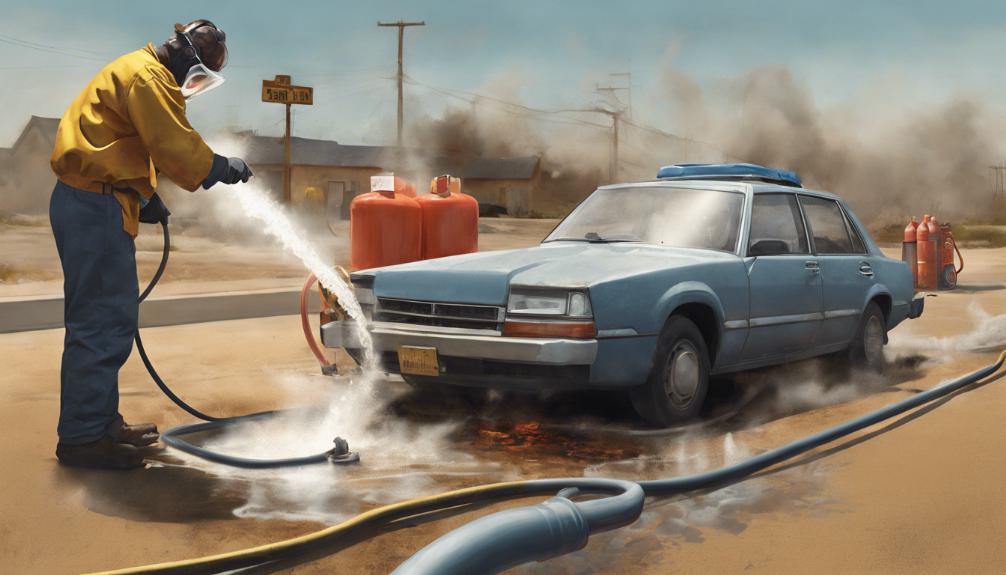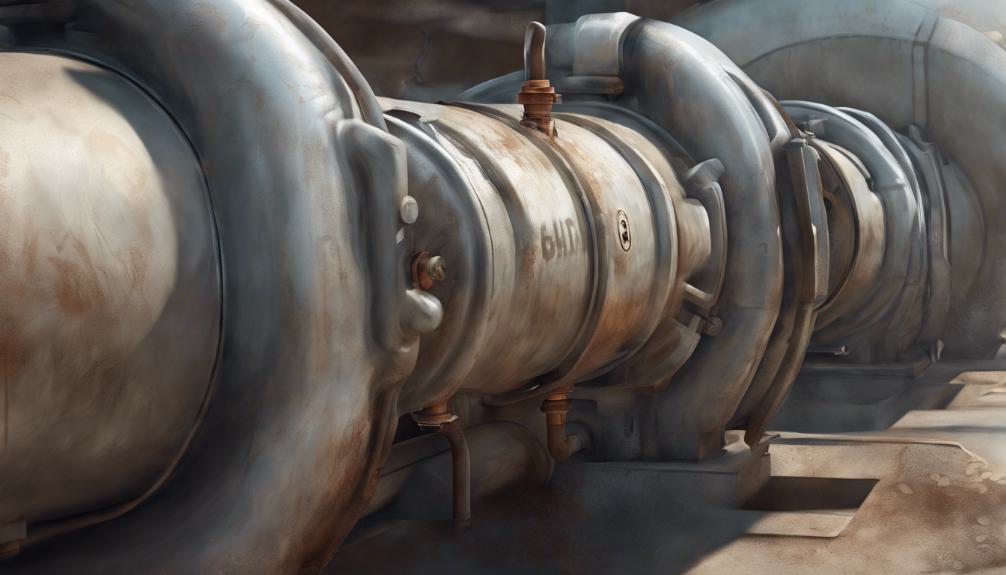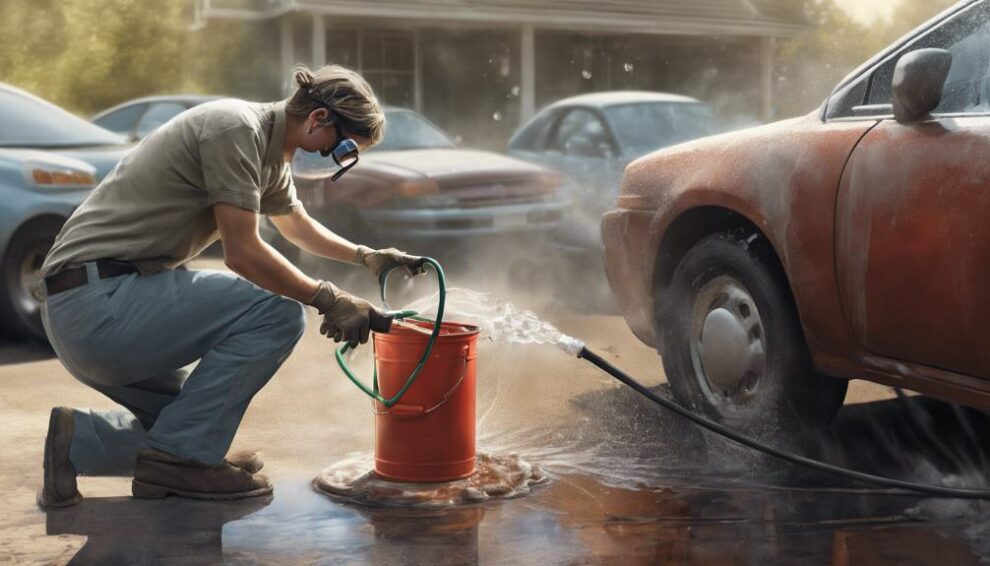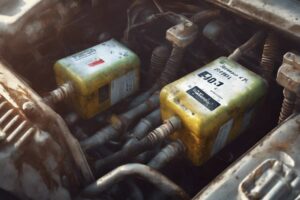When siphoning gas, beware of anti-siphon valves, filler door locks, and flapper mechanisms obstructing fuel transfer. Recognize valve types and troubleshoot by inspecting tubes or fuel lines.
Avoid health risks: never siphon gas with your mouth. Use a siphon pump instead to prevent inhaling toxins or swallowing chemicals. Wear gloves, use safe pumps, and beware of ignition risks.
Modify vehicles cautiously to overcome security features. Drill into tanks if needed. To safely siphon gas, follow steps carefully and consider preventive measures.
Learn more about siphoning gas securely and efficiently by understanding potential obstacles and solutions.
Key Points
- Use FDA-approved siphon pumps to avoid inhaling toxic fumes.
- Wear nitrile gloves for hand protection during gas siphoning.
- Recognize and bypass anti-siphon valves to facilitate safe fuel extraction.
- Opt for non-sparking tools to prevent ignition risks when siphoning gas.
- Exercise caution when overcoming vehicle obstacles like flapper mechanisms and filler door security features.
Risks and Challenges in Gas Siphoning

When attempting to siphon gas from modern vehicles, you’ll encounter various obstacles and hazards that can impede the fluid transfer process.
Understanding risks associated with gas siphoning is essential for a successful operation.
Anti-siphon valves, commonly found in modern vehicles, act as barriers, impeding the smooth flow of fuel. These valves are designed to prevent siphoning and can complicate the process.
Troubleshooting challenges arise when dealing with lockable filler doors and caps that obstruct access to the fuel tank. Then, flapper mechanisms inside filler tubes can further hinder gas siphoning efforts.
To overcome these obstacles, it’s important to have a good grasp of how anti-siphon valves function, including types like ball valves.
Bypassing these valves may require disassembling filler tubes or accessing fuel lines directly.
By understanding the mechanics behind these anti-siphon measures, you can troubleshoot effectively and increase your chances of a successful gas siphoning process.
Avoiding Harmful Practices
To guarantee your safety and avoid harmful consequences, it’s crucial to refrain from siphoning gas with your mouth and opt for using a siphon pump instead.
Preventing accidents and health hazards should be your top priorities when handling gasoline.
Siphoning gas with your mouth can lead to ingesting harmful chemicals and is unsafe. This practice can result in accidents like swallowing gasoline or getting it in your eyes.
Such actions can have severe health repercussions due to the high toxicity of gasoline.
Using a siphon pump reduces the risk of inhaling toxic fumes while transferring gas, making it the safest way to siphon gas.
Remember always to prioritize your health and safety when working with hazardous materials like gasoline.
Recognizing Anti-Siphon Valves

Identifying anti-siphon valves in vehicles can be crucial for individuals attempting to extract fuel safely and effectively.
These valves are common barriers designed to prevent unauthorized fuel extraction, serving as anti-theft features.
Anti-siphon valves, like ball valves, obstruct the flow of fuel, making siphoning challenging. To recognize these mechanisms, look for components within the fuel system that impede the smooth transfer of fuel.
Disassembling the filler tube may be necessary to bypass or disable anti-siphon valves for successful siphoning.
In some cases, methods like drilling or using sharp tools can be employed to access fuel in tanks equipped with these anti-theft features.
Another approach is tapping into fuel lines to circumvent anti-siphon valves and safely extract fuel.
Safety Precautions and Tools
Guarantee your safety when siphoning gas by using essential tools and following proper precautions. Remember, safety should always be your top priority when handling fuel. Here are some key points to keep in mind:
- Protective gear: Always wear nitrile gloves to protect your hands from the chemicals present in gasoline. These gloves act as a barrier, preventing direct contact with harmful substances.
- Equipment essentials: Utilize tools like The Original Safety Siphon, which is FDA approved as Food Grade for home brew setups.
Then, opt for non-sparking tools such as multitools to safely access fuel without the risk of sparks igniting flammable vapors.
- Awareness of gas dangers: Understand the risks associated with gas vapors and explosions. Prioritize safety precautions to mitigate these dangers effectively.
- Special considerations for urban preppers: If you’re storing gasoline in urban settings with limited space, take extra precautions to ensure safe storage and siphoning practices.
Is it Safe to Siphon Both Leaded and Unleaded Gas Using the Same Method?
Siphoning both leaded and unleaded gas using the same method is not safe. The main difference between leaded gas and unleaded gas is the presence of lead in the former. Siphoning leaded gas can expose you to toxic lead fumes, making it important to use separate methods for each type of fuel.
Overcoming Vehicle Obstacles

When faced with lockable filler doors and caps on modern vehicles, overcoming these obstacles becomes essential for successful gas siphoning. Vehicle modifications may be necessary to bypass filler door security features.
Some modern cars have flapper mechanisms inside the filler tubes that can impede siphoning; in such cases, alternative siphoning techniques are required.
Anti-siphon screens and valves are common barriers to fuel transfer, often requiring careful handling.
Breaking through these screens may be necessary, but caution must be exercised to prevent any damage to the vehicle.
Consider alternative methods like drilling into polymer tanks or accessing fuel lines to overcome challenges posed by anti-siphon valves.
Emergency Preparedness and Urban Environments
To navigate urban environments effectively during emergencies, preparedness for gas siphoning is essential. Urban preppers face unique challenges when it comes to fuel storage and emergency situations in cities.
When considering emergency preparedness in urban environments for siphoning gas, it’s vital to focus on the following key points:
- Evacuation routes: Familiarize yourself with the evacuation routes in your urban area to guarantee a safe and efficient escape in case of emergencies.
- Fuel storage: Due to limited space and regulations in urban settings, urban preppers need to find creative and compliant ways to store gasoline for emergencies.
- Adaptability: Urban survival scenarios may require quick thinking and flexibility when it comes to siphoning gas, especially in densely populated areas.
- Bug-out plan: Having a well-thought-out bug-out plan is essential for urban preppers to evacuate safely during disasters or crises, including situations that may involve siphoning gas from abandoned vehicles.
As an Amazon Associate we earn from qualifying purchases.










